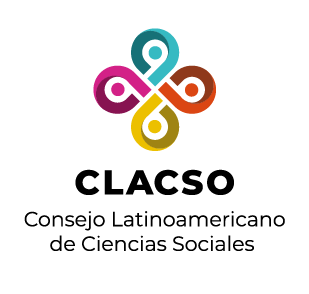Red de Bibliotecas Virtuales de Ciencias Sociales en
América Latina y el Caribe

Por favor, use este identificador para citar o enlazar este ítem:
https://biblioteca-repositorio.clacso.edu.ar/handle/CLACSO/275547Registro completo de metadatos
| Campo DC | Valor | Lengua/Idioma |
|---|---|---|
| dc.creator | Calderón, Alí | es |
| dc.date | 2020-07-21 | - |
| dc.date.accessioned | 2025-11-05T18:38:22Z | - |
| dc.date.available | 2025-11-05T18:38:22Z | - |
| dc.identifier | https://revistas.unc.edu.ar/index.php/recial/article/view/29412 | - |
| dc.identifier | 10.53971/2718.658x.v11.n17.29412 | - |
| dc.identifier.uri | https://biblioteca-repositorio.clacso.edu.ar/handle/CLACSO/275547 | - |
| dc.description | This work develops a critic category starting from certain poems that require breaking with the notion of “literary autonomy”: the lyrical intention. The poem, linked to autobiography, the autofiction or the autonarrative, leaves behind the traditional definition of lyricism to account for a theoretical problem: the distinct layers or levels that give the pronoun “I” a meaning. From the critical contributions of the theory of enunciation (Dominique Rabaté, Alain Rabatel, Dominique Maingueneau, Jean-Michel Maulpoix), various modal subjects or scenographies in which the lyrical intentionality operates are described. In this sense, I intend to incorporate the analysis of the lyrical subject and the Scribens, a concept that integrates them: the poetic signature, as described by Mutlu Konuk Blasing. | en |
| dc.description | Este artículo desarrolla una categoría crítica a partir de ciertos poemas que requieren quebrantar la noción de autonomía literaria: la intención lírica. El poema, vinculado a la autobiografía, a la autoficción o a la autonarración, deja de lado la tradicional definición de lirismo para plantear un problema teórico: las diferentes capas o niveles que llenan de sentido al pronombre yo. Desde los aportes críticos de la teoría de la enunciación (Dominique Rabaté, Alain Rabatel, Dominique Maingueneau, Jean-Michel Maulpoix) se describen distintos sujetos modales o escenografías en las que opera la intencionalidad lírica. De este modo, se pretende incorporar al análisis del Sujeto lírico y el Scribens un concepto que los integra: la firma poética, según la describe Mutlu Konuk Blasing. | es |
| dc.format | application/pdf | - |
| dc.format | text/html | - |
| dc.language | spa | - |
| dc.publisher | Facultad de Filosofía y Humanidades | es |
| dc.relation | https://revistas.unc.edu.ar/index.php/recial/article/view/29412/30207 | - |
| dc.relation | https://revistas.unc.edu.ar/index.php/recial/article/view/29412/30208 | - |
| dc.rights | https://creativecommons.org/licenses/by-nc-sa/4.0 | es |
| dc.source | Recial; Vol. 11 Núm. 17 (2020): Dossier: Últimas tendencias en la poesía hispanoamericana (1960-2019): de las literaturas nacionales a la construcción de un canon transatlántico; 9-30 | es |
| dc.source | 2718-658X | - |
| dc.source | 1853-4112 | - |
| dc.source | 10.53971/2718.658x.v11.n17 | - |
| dc.subject | lyrical enunciation | en |
| dc.subject | lyrical intention | en |
| dc.subject | modal subject | en |
| dc.subject | scenography | en |
| dc.subject | voice | en |
| dc.subject | enunciación lírica | es |
| dc.subject | escenografía | es |
| dc.subject | intención lírica | es |
| dc.subject | sujeto modal | es |
| dc.subject | voz | es |
| dc.title | The Lyrical Intention. Notes on an Archgenre | en |
| dc.title | La intención lírica. Notas sobre un archigénero | es |
| dc.type | info:eu-repo/semantics/article | - |
| dc.type | info:eu-repo/semantics/publishedVersion | - |
| Aparece en las colecciones: | Centro de Investigaciones - CIFFyH/UNC - Cosecha | |
Ficheros en este ítem:
No hay ficheros asociados a este ítem.
Los ítems de DSpace están protegidos por copyright, con todos los derechos reservados, a menos que se indique lo contrario.